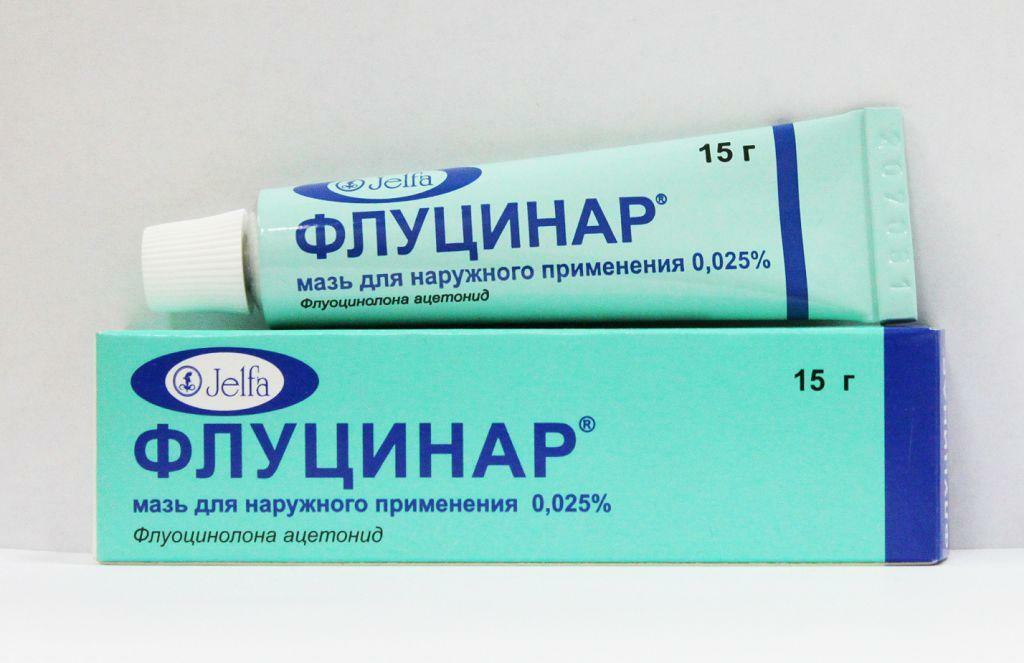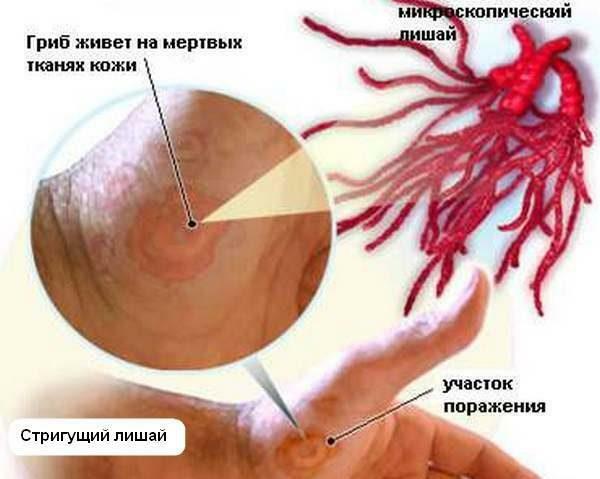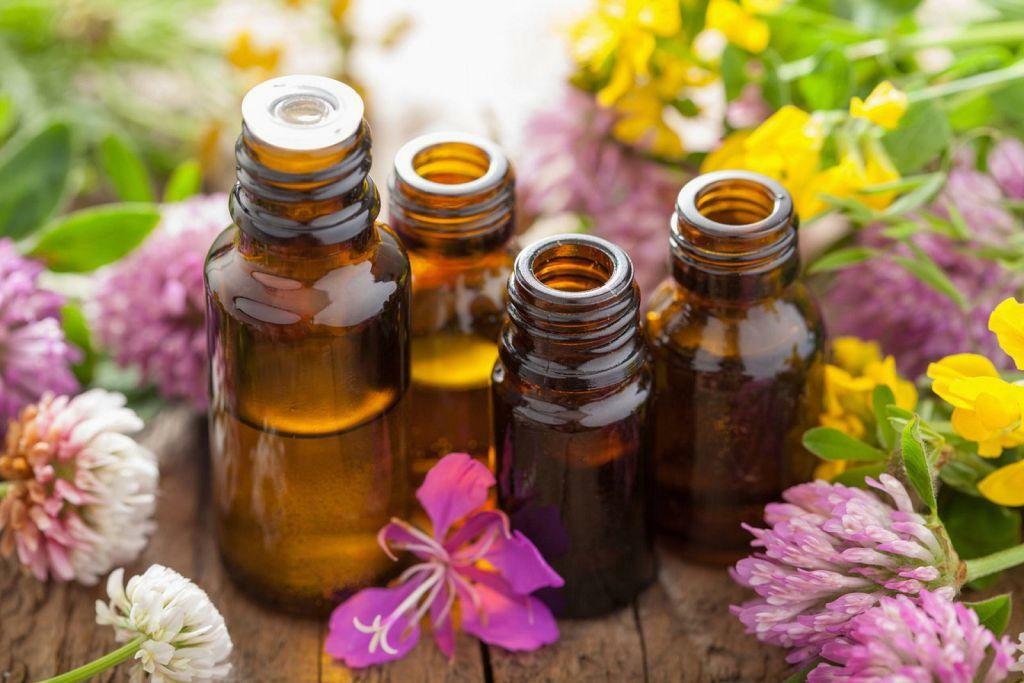Once accidentally hitting the child's head, lice feel very comfortable there. The heat that secretes the scalp is successfully preserved under the hairline, which creates an insect favorable temperature for the habitat. They feed in the same place, piercing the skin with a small proboscis and sucking blood. All this creates lice ideal conditions for reproduction, which they quickly and successfully do, leaving on their hair their eggs - larvae, commonly called "nits."The adult female is able to postpone several hundred larvae per week, which later hatch, grow, and in turn - reproduce.
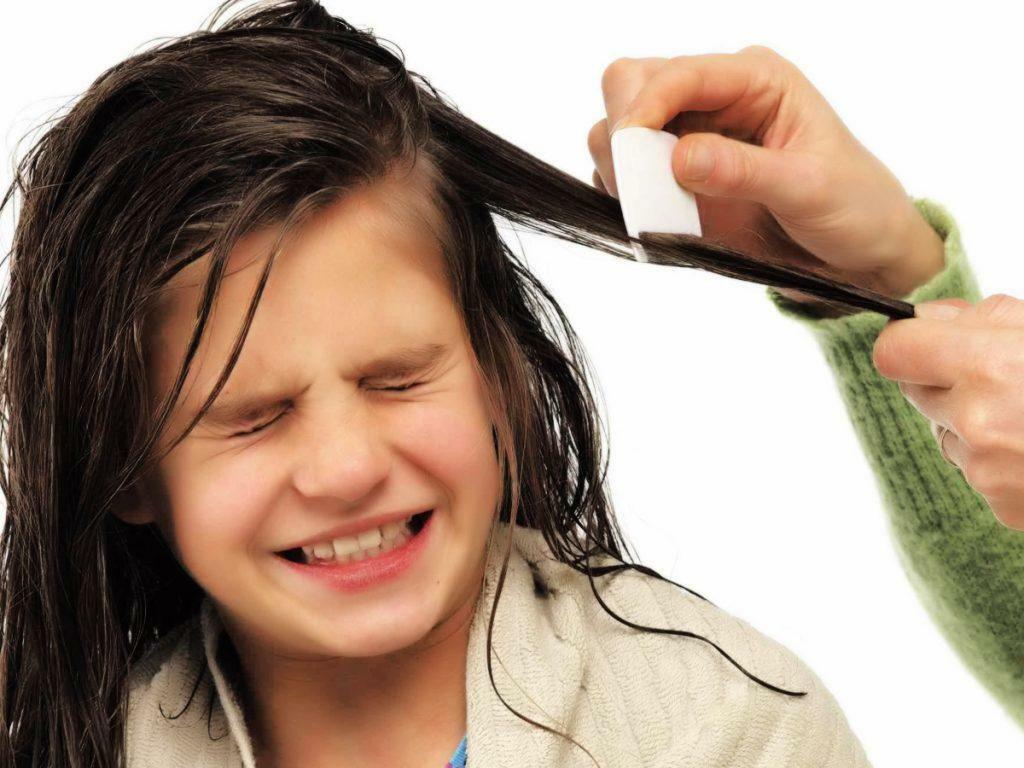
Lice in children: treatment at home
Important! Lice can not fly or jump from person to person, so do not comb the child with other hairbrushes, do not use rims, hairpins and hats of other children.
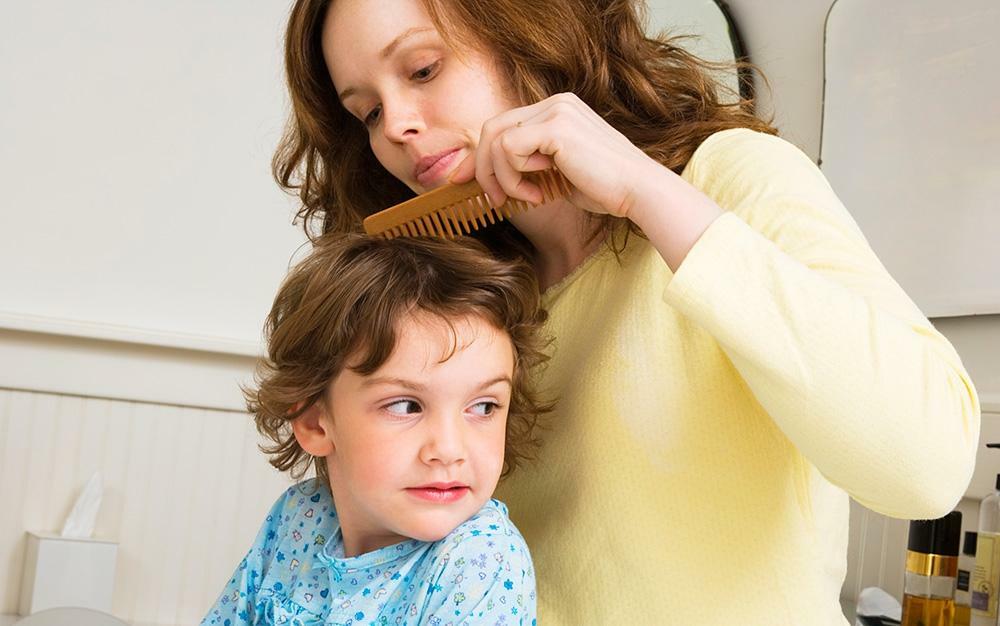
Using foreign hairbrushes increases the risk of lice in your child
Content of material
- 1 Causes of pediculosis in children
- 1.1 Suspicion of lice in a child
- 2 How to detect lice
- 2.1 How they look
- 3 Risk group
- 4 Methods of treatment
- 4.1 Combing combs
- 5 Pharmacy preparations
- 5.1 Study the composition of the preparations!
- 5.2 Recommended drugs
- 6 Folk remedies
- 6.1 Video - How to save a child from lice
Causes of pediculosis in children
It is considered that lice reproduce in conditions of poor hygiene, but nobody is insured against this unpleasant phenomenon. You can get caught in public transport, in a team with casual close contact, in the locker room of a sports hall or pool. Not always the reason is neglect of hygienic procedures. Lice easily settle on the head of the children they bathe every day, and children whose parents do not particularly care about hygiene. After all, children are constantly in closer contact with each other than adults, with joint games and brawls. They are less than adults, they know and observe elementary rules, can share hairbrushes, pillows, hats, toys.

You can get infected from close contact with other children
It's important to know! Lice are insects that live only on human hair. They are not transmitted through animals and birds, so the risk area is limited by the human factor.
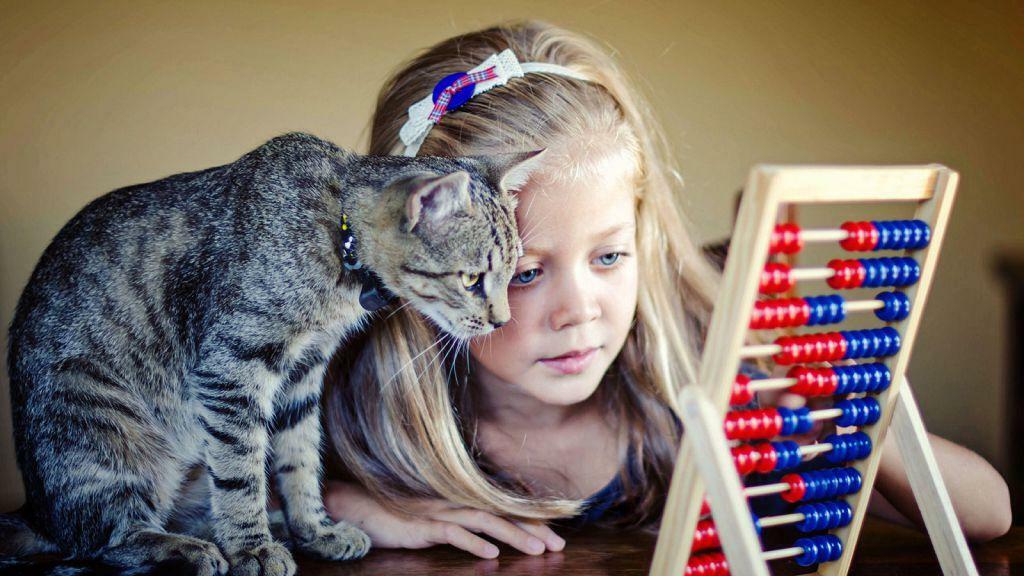
Animals can not be carriers of lice
Suspect for lice in a child
A careful parent will easily detect signs of lice in a son or daughter:
- the child begins to scratch his head constantly in different places, especially the back of the head and behind the ears;
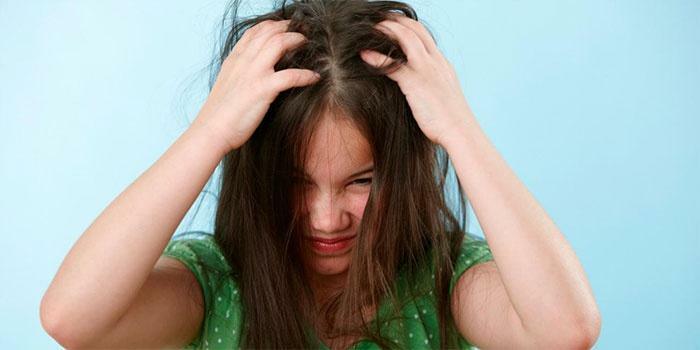
If the child constantly scratches his head, this may be a symptom of the appearance of lice
- hair quickly get slovenly appearance, dandruff may appear. Does not help frequent head washing;
- under close examination under the hair and on the neck irritated areas are visible, combing can lead to the formation of ulcers and dark spots;

On close examination, you can see irritated skin areas and sores
- the child complains of itching, infections can get into the wound and cause the formation of furuncles and pustules.
How to detect lice
If the above signs appear, you need to do the following:
- put the child near the window or in any place where there is enough light;
- turn on the lamp, pointing it directly at the child's head;
- to take a comb with small denticles and with its help to divide hair into parting, alternately examining the entire surface of the head;
- pay attention to the roots of hair - there usually lice lay their eggs - nits;
- when detecting small light beetles that swarm in their hair - make sure that it is hair lice.

It is necessary to pay attention to the roots, there may be lice eggs
Important! If a parasite is found, do not try to destroy it in places on the skin where scratching and sores are visible, this can contribute to infection.
How they look
Lice are almost impossible to confuse with other insects, such as a tick or flea. The first usually sit in one place, clinging to the skin and sucking the blood, without moving, they are larger and darker than the hair lice. Fleas can accidentally get on the skin of a child from a cat or dog, but by biting once, the flea usually does not stay in one place, but jumps on.

Hair lice
Lice are practical single parasites that try to fit into a person's hair for a long time. This is a light-colored insect with six legs, up to 4 mm long, when crushed, they produce a characteristic clapping sound, often filled with the blood of their "master."
Risk group
In general, children and schoolchildren of lower grades are subject to this unpleasant phenomenon. Many people are uncomfortable talking about this topic, and some are simply ashamed if they found lice on their own children's head. Do not blame yourself or blame the child for this, because your fault in this.
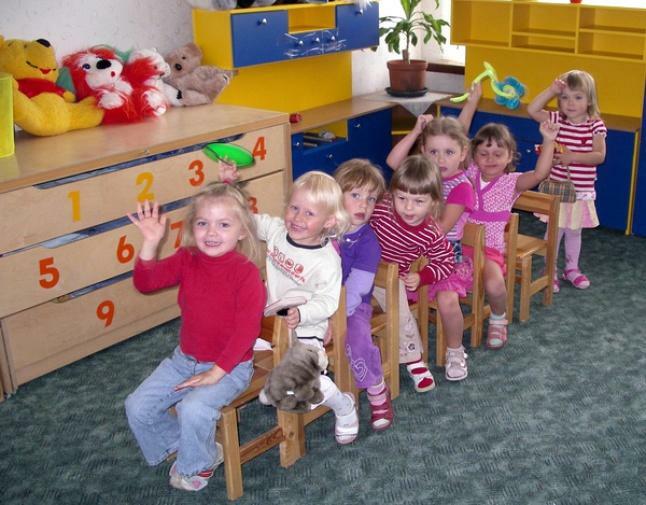
In general, infection with pediculosis happens in children
The times when lice were associated with poverty and dirt have passed. Now the fact that a child can bring lice from a sports camp or kindergarten is not a sensational phenomenon. Parasites spread very quickly in children's groups. In this case, treatment must necessarily be joint, as there is no reason to treat the child, if at least one other member of the team is left without attention. In this case, the withdrawn parasites can safely return. If the child is limited in communicating with peers, does not go to kindergarten or school - then the reasons can be at home and should check the members of the family.
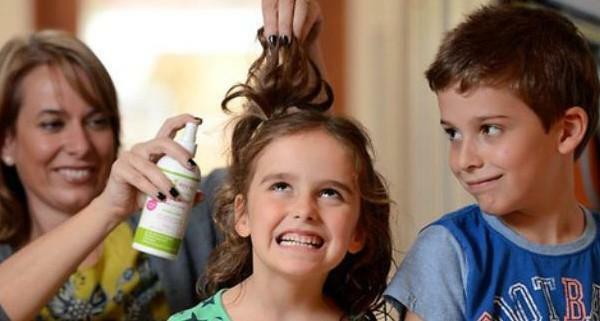
In case of lice in a child, all members of the
family should be checked. Attention! It is necessary to clarify from which particular source the infection occurred and treat all carriers in order to avoid repeated cases.
Treatment methods
The most radical and rapid treatment without special costs and side effects is shaving naked. But this is unacceptable for many parents and their children, especially for girls. This can cause serious mental trauma to the child. Therefore, you need to consider a number of less radical remedies that will help get rid of lice and keep your hair. There are three common methods: combing with special combs, pharmacy drugs and folk remedies.
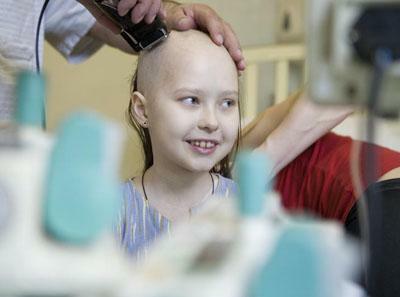
The fastest way to remove lice is to shave the shoe
Combing combs
Special combs or combs for combing lice and nits are sold in pharmacies. The distance between the teeth of such a comb is no more than 0.2 mm, which allows it to comb out from the surface of the head and hair both lice and their larvae. This method is long, it requires the parent to have energy and patience.5-6 days of constant use will allow to achieve the result. Before you start, lay a wide white towel or sheet, where the scrubbed parasites will fall. It also allows you to monitor the effectiveness of the process.

Comb combing lice and nits
For easy combing, the child's head is rinsed:
- with warm water( 3-4 liters), diluted with 9% vinegar in a ratio of 1: 3( table vinegar, not acid!).Such a solution helps to remove nits from the hair easier, which will facilitate the process. A solution of citric acid is also used;
- ½ teaspoon of citric acid for 2.5 - 3 liters of warm water. It dissolves the sticky solution with which the nit is attached to the hair.

Before combing out, baby's head should be rinsed with a solution of vinegar and citric acid
Important! When preparing a rinse aid, strictly follow the proportions. The presence of wounds and scratching on the child's head can cause burning with a stronger concentration.
Pharmaceutical preparations
The pharmacies have a large number of drugs for the treatment of pediculosis. This can be sprays, creams or shampoos. But when using them for a child, it is necessary to understand which particular drug is suitable for him. Such remedies are often toxic and one has to study the effects of each so as not to cause undesirable side reactions. Usually, do not use sprays for children under 12 years of age, because of the danger of toxic substances entering the child's airways. Children are recommended to use pediculicidal creams.
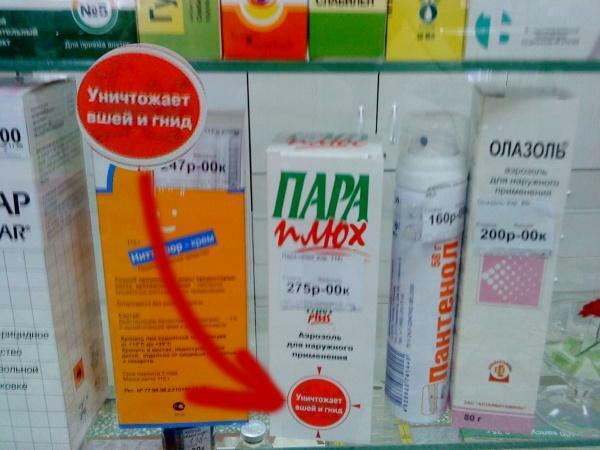
There are a lot of drugs for removing lice in pharmacies, it is necessary to find out what is suitable for your child
It is necessary to familiarize yourself with the instructions for use for each drug, then apply to the child's head and sustain the necessary amount of time. After flushing it is desirable to comb the hair with a comb for combing the lice, to enhance the effect.
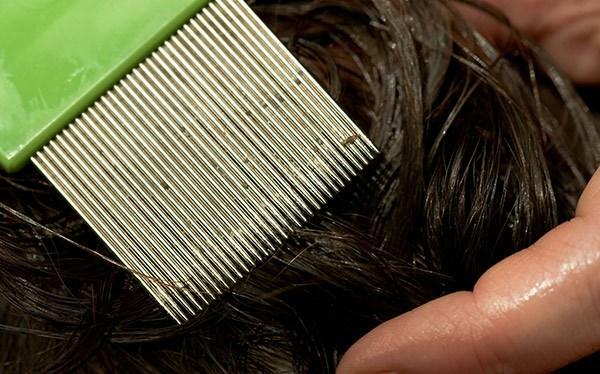
After flushing the drug, it is worth combing the hair with a special comb, to enhance the effect of
Remember! Since children are not treated with highly toxic drugs, some nits can remain alive, so they need to be combed additionally or repeated a few days later.
Study the composition of the drugs!
If we consider the treatment of pediculosis in a child on their own, at home, it is worth remembering several chemicals that can adversely affect the baby's body.
- "MediFox" and "Nittifor", in which the permethrin substance is included. Numerous populations of lice have developed immunity to it, whereas in a child it can cause an allergic reaction, swelling of the mucous throat and nose. Do not use for children under 5 years.
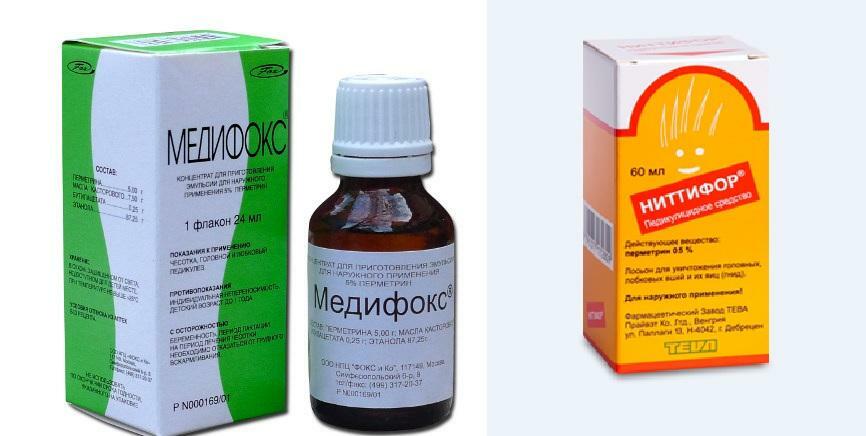
Medifox and Nittifor
- Pedilin based on malathion. The substance has a neuro-paralytic effect by inhaling the evaporated substances and contact with the skin. May cause nausea, dysfunction of the heart and pressure jumps. Do not recommend to children under 3 years old.
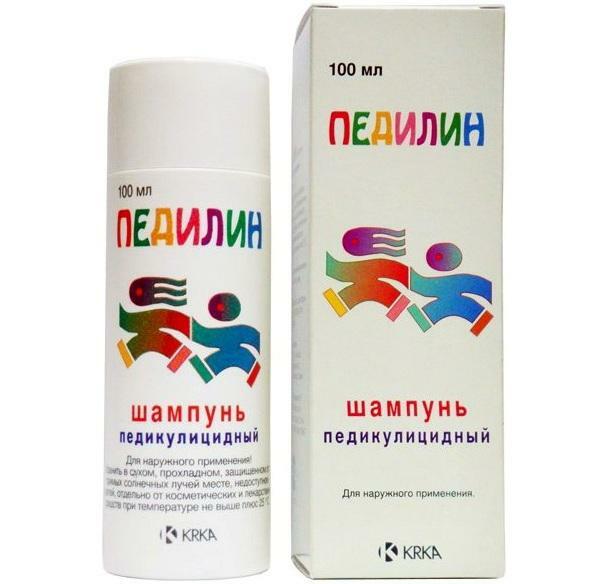
"Pedilin"
Recommended drugs
The best means for lice for children( according to parents and pediatricians).
| Preparation | Description |
|---|---|
 Paranit | Ingredients include oil that helps rid lice and nits simultaneously |
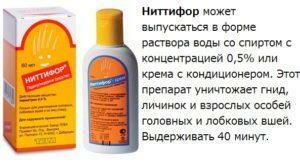 Nittifor | Effective against lice and nits for children over 5 years |
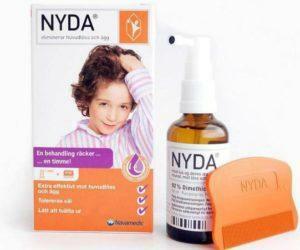 Nyuda | Spray authorized for usetoddlers up to the year |
 NitFri preparations | With shampoo and gel that helps soften the shells of larvae of lice |
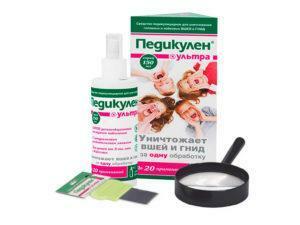 Pedikulen | Means recommended for children under 5 |
Folk remedies
To children who are prone to allergic reactions to chemicals, and to all parents who adhere to the methods of treating pediculosis with folk remedies, the following recipes can be advised:
- with geranium oil. 5-6 drops of oil add to the used shampoo and, after soaping, do not rinse for 2-3 minutes. The smell of geranium scares off parasites. Wash your hair for 5-6 days;
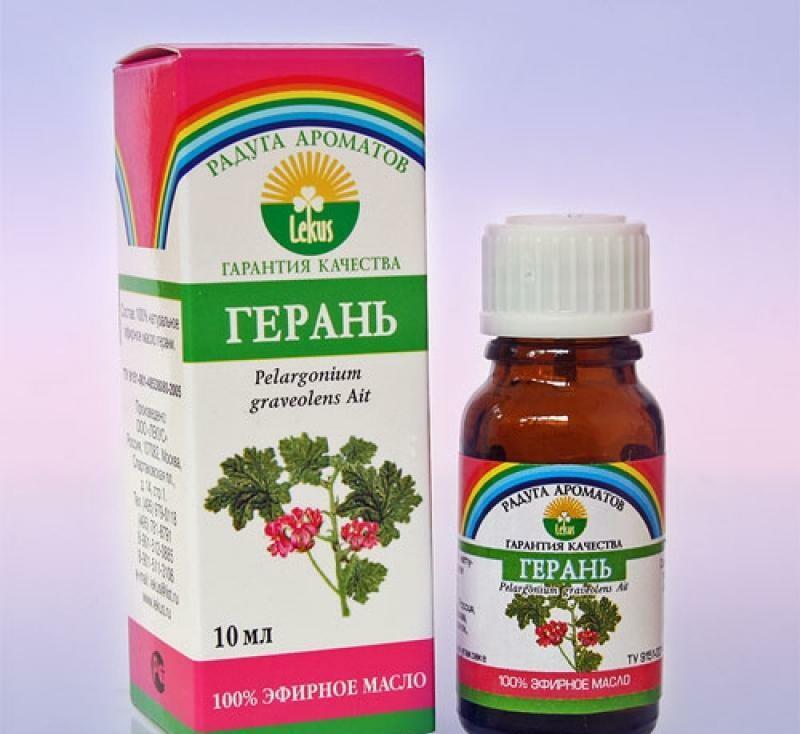
Oil of geranium
- with burdock. 100 grams of a dry or fresh plant brew for 1 liter of water, insist and strain. The resulting broth is added to the water to wash the head. Use until results are obtained;
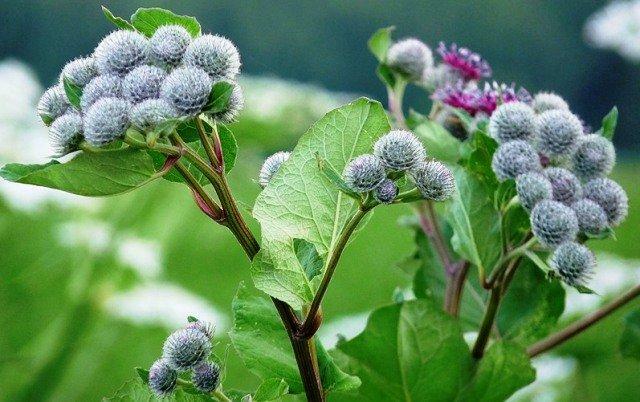
Agrimony
- with cranberries. 100-150 grams of cranberries squeezed into juice and mixed with a teaspoon of honey. To rub in a head before combing out throughout a week;
- cranberry juice with mint. 2 tbsp. Spoons of mint leaves boil with a glass of pomegranate juice( natural).Rub into affected areas of the skin on the head 2-3 times a day, until the condition improves.

Mint leaves
Of course, do not use such folk remedies as dichlorvos and kerosene to children. They are fairly well known, but they are dangerous to the child's body and can cause serious chemical burns.

